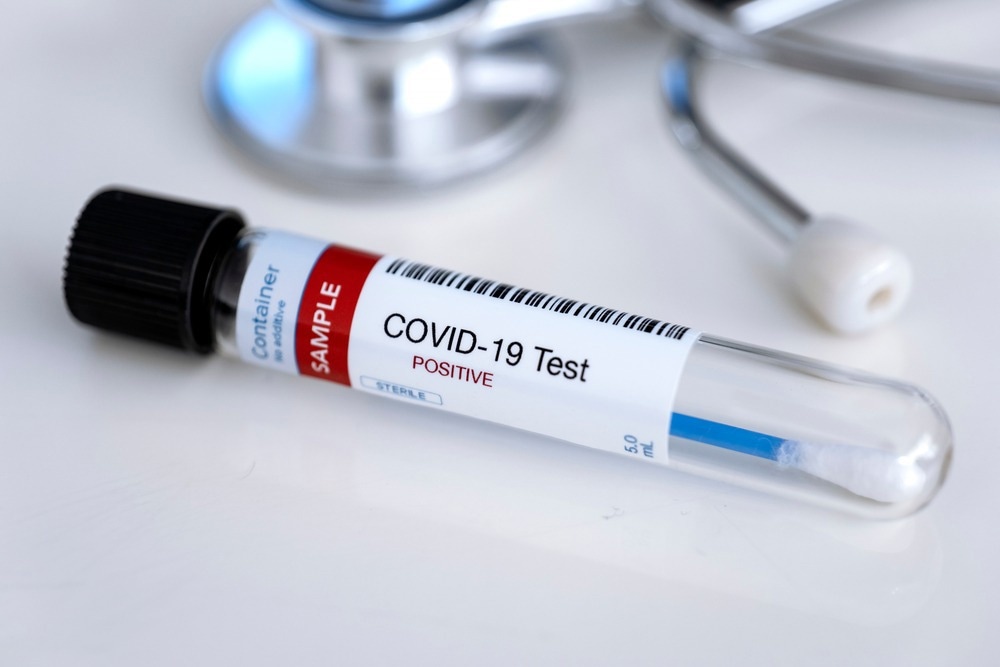The continuous evolution of the severe acute respiratory syndrome coronavirus 2 (SARS-CoV-2) has resulted in the emergence of several variants, such as the Alpha, Beta, Delta, Iota, and Omicron variants. At present, SARS-CoV-2 Omicron variants are dominantly circulating in most countries throughout the world.

Study: Awareness of SARS-CoV-2 Omicron Variant Infection Among Adults With Recent COVID-19 Seropositivity. Image Credit: Myriam B / Shutterstock.com
Background
Some of the factors associated with the rapid spread of SARS-CoV-2 variants are high transmissibility, capacity to escape immune responses elicited through natural infection, and coronavirus disease 2019 (COVID-19) vaccines, reduced use of face masks, and changes in socializing behaviors.
Other factors that might have facilitated the surge in Omicron cases include the variable efficacy of available vaccines against this strain and waning levels of immunity induced by vaccination.
Although many studies on the Omicron variant are available, the extent of reduced awareness of an individual’s infectious status, which might be a contributing factor to the global surge in Omicron cases, has yet to be determined. This is an important consideration, as previous studies suggest that an outbreak can occur through asymptomatic or mild SARS-CoV-2 infections.
A recent JAMA Network Open study reports on the awareness level among individuals during the recent Omicron variant surge in diverse urban regions of Los Angeles County in California.
About the study
In this large observational cohort study, SARS-CoV-2 serological assays were performed on participants before or after the surge in the number of Omicron cases in this region. All relevant data on employees and patients at the Cedars-Sinai Medical Center in Southern California was considered.
Cedars-Sinai Medical Center is an academic medical center that participated in a longitudinal COVID-19 serological study in Los Angeles County. Among the 6,385 participants enrolled in the source study, 210 were selected with serological evidence of recent Omicron infection. Medical histories, SARS-CoV-2 exposures, and symptoms of all participants were obtained.
SARS-CoV-2 serological assays were performed for all samples. All participants were subjected to two or more serial anti-nucleocapsid immunoglobulin G (IgG-N) antibody measurements at least one month apart.
The first IgG-N level was estimated at the end of a regional SARS-CoV-2 Delta variant surge on September 15, 2021. Similarly, the subsequent measurement was obtained following the first regional surge of the Omicron variant on December 15, 2021. The current study also included adults newly diagnosed with Omicron infection as of May 4, 2022.
Study findings
Among the 210 participants of this longitudinal cohort study, 74 were men, and 136 were females whose ages ranged between 23 and 84 years. Overall, only 44% of the cohort demonstrated awareness of their COVID-19 status. Therefore, recent seroconversion results imply that most individuals with Omicron infection remained unaware of their infection status.
Individuals who were asymptomatically infected with the Omicron variant were mostly unaware of their infection status. In addition, 10% of the study cohort who experienced mild symptoms attributed it to the common cold or another non-SARS-CoV-2 infection.
These findings strongly indicate that the lack of awareness of COVID-19 status, either due to relatively absent symptoms or lack of timely testing, led to significant viral transmission within communities in Los Angeles County.
Every tenth individual who contracted Omicron infection remained unaware of their infection status. Nevertheless, participants who were employed in Cedars-Sinai Medical Center showed better awareness of their Omicron infection as compared to non-employees.
This differential awareness might be attributed to a mandatory daily COVID-19 screening policy for employees. Interestingly, younger and male individuals exhibited relatively higher awareness of Omicron infection.
Conclusions
The current study provided a detailed assessment of Omicron infection awareness in a diverse and populated region of the United States for the first time. A relatively high level of unawareness was observed related to Omicron infection.
Some of the limitations of the study include the use of assays with limited technical sensitivity. Thus, seroconversion values could be underestimated as compared to the true values. Additionally, owing to the modest sample size, researchers failed to detect multiple factors related to Omicron infection awareness.
In the future, a larger dataset of symptoms is needed to better understand the extent to which seroconversion events are asymptomatic or symptomatic. As most of the study participants received messenger ribonucleic acid (mRNA) vaccines, in the future, a similar study considering individuals who received non-mRNA vaccines must be conducted.
Additionally, to increase the generalizability of the results, similar research must be conducted in other diversified locations.
Journal reference:
- Joung, Y. S., Ebinger, J. E., Sun, N., et al. (2022) Awareness of SARS-CoV-2 Omicron Variant Infection Among Adults With Recent COVID-19 Seropositivity. JAMA Network Open 5(8): e2227241. doi:10.1001/jamanetworkopen.2022.27241.